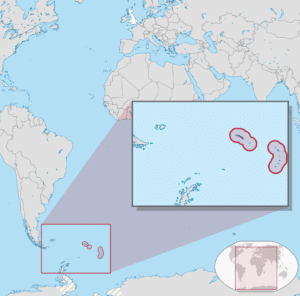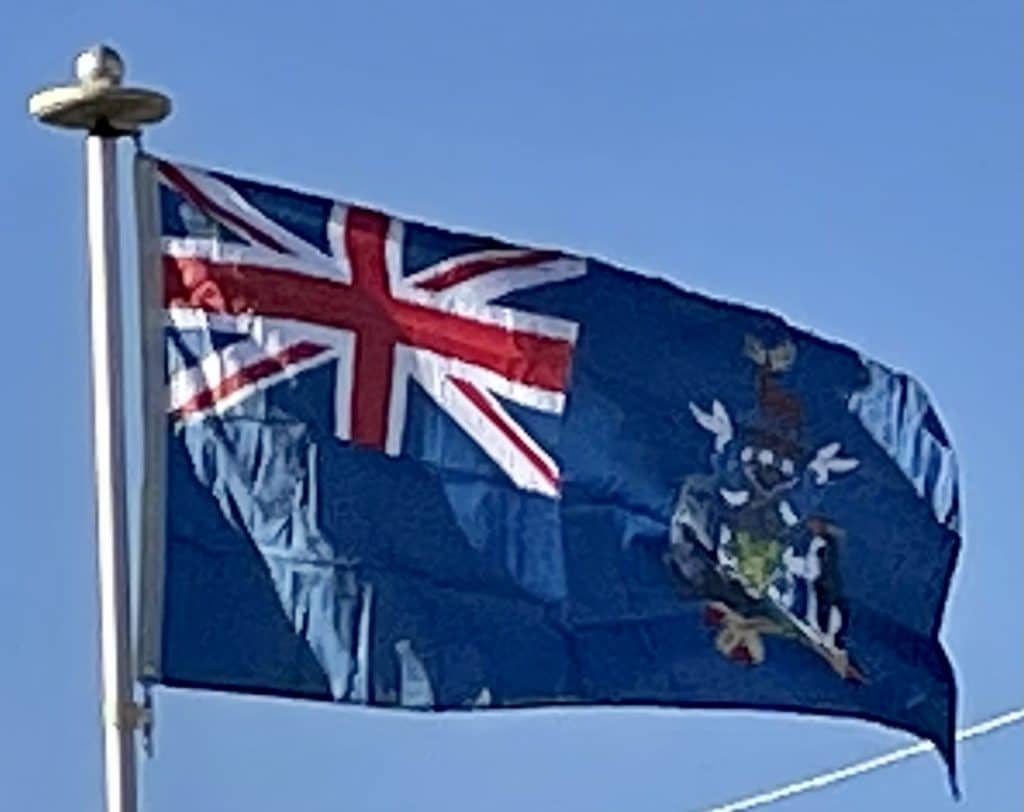Introduction:
South Georgia and the South Sandwich Islands (SGSSI) is a British Overseas Territory in the southern Atlantic Ocean. It is a remote and inhospitable collection of islands, consisting of South Georgia and a chain of smaller islands known as the South Sandwich Islands. South Georgia is 165 kilometers (103 mi) long and 35 kilometers (22 mi) wide and is by far the largest island in the territory. The South Sandwich Islands lie about 700 kilometers (430 mi) southeast of South Georgia. The territory’s total land area is 3,903 km2 (1,507 sq mi).[1] The Falkland Islands are about 1,300 kilometers (810 mi) west from its nearest point.

The South Sandwich Islands are uninhabited, and a very small non-permanent population resides on South Georgia. There are no scheduled passenger flights or ferries to or from the territory, although visits by cruise liners to South Georgia are increasingly popular, with several thousand visitors each summer.
The United Kingdom claimed sovereignty over South Georgia in 1775 and the South Sandwich Islands in 1908. The territory of “South Georgia and the South Sandwich Islands” was formed in 1985; previously, it had been governed as part of the Falkland Islands Dependencies. Argentina claimed South Georgia in 1927 and claimed the South Sandwich Islands in 1938.
Argentina maintained a naval station, Corbeta Uruguay, on Thule Island in the South Sandwich Islands from 1976 until 1982 when it was closed by the Royal Navy. The Argentine claim over South Georgia contributed to the 1982 Falklands War, during which Argentine forces briefly occupied the island. Argentina continues to claim sovereignty over South Georgia and the South Sandwich Islands.
Toothfish are vital to the islands’ economy; as a result, Toothfish Day is celebrated on 4 September as a bank holiday in the territory.
History:
South Georgia:
17th to 19th centuries:
The island of South Georgia was first sighted in 1675 by Anthony de la Roché, a London merchant and (despite his French name) an Englishman. The island appeared as Roche Island on early maps. The commercial Spanish ship León, operating out of Saint-Malo sighted it on 28 June or 29 June 1756.
James Cook circumnavigated the island in 1775 and made the first landing. He claimed the territory for the Kingdom of Great Britain, naming it the “Isle of Georgia” in honor of King George III of the United Kingdom. British arrangements for the government of South Georgia were established under 1843 British letters patent.
In 1882–1883 a German expedition for the first International Polar Year set up its base at Royal Bay on the southeast side of the island. The scientists of this group observed the transit of Venus and recorded waves produced by the 1883 eruption of Krakatoa. Seal hunting at South Georgia began in 1786 and continued throughout the 19th century. The waters proved treacherous and a number of vessels were wrecked there, such as Earl Spencer, in late-1801.
20th and 21st centuries:
South Georgia became a base for whaling beginning in the 20th century. A Norwegian, Carl Anton Larsen, established the first land-based whaling station and first permanent habitation at Grytviken in 1904. It operated through his Argentine Fishing Company, which settled in Grytviken. The station operated until 1965. Whaling stations operated under leases granted by the Governor of the Falkland Islands. The seven stations, all on the north coast with its sheltered harbors, were, from the west to east:
The whaling stations’ tryworks were unpleasant and dangerous places to work. One was called “a charnel house boiling wholesale in Vaseline” by an early 20th-century visitor. Tim Flannery wrote that its “putrid vapors [resembled] the pong of bad fish, manure, and a tanning works mixed together”, and noted one bizarre peril: “A rotting whale could fill with gas to bursting, ejecting a fetus the size of a motor vehicle with sufficient force to kill a man.”


